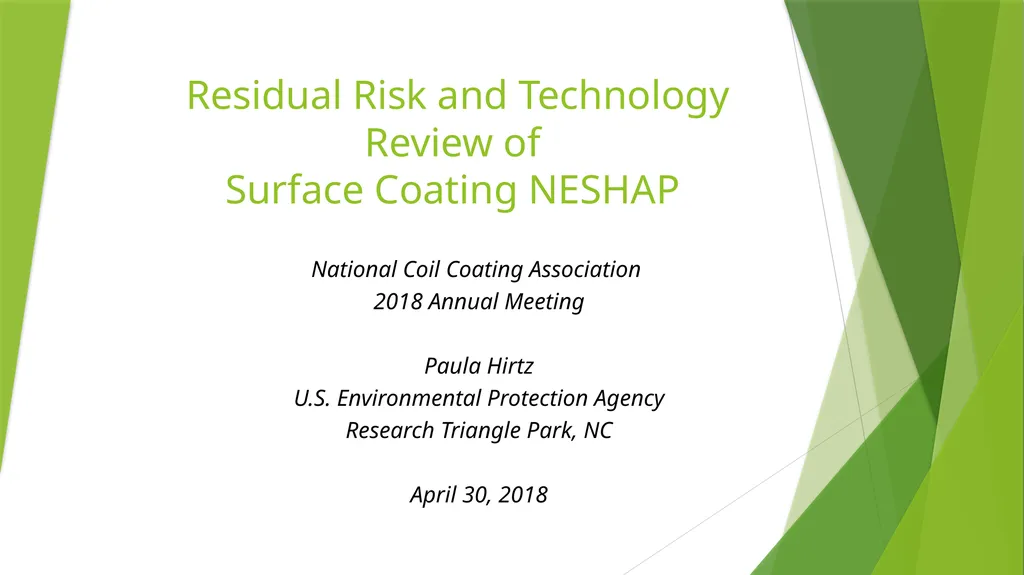Residual Risk and Technology Review of Surface
Author : stefany-barnette | Published Date : 2025-05-09
Description: Residual Risk and Technology Review of Surface Coating NESHAP National Coil Coating Association 2018 Annual Meeting Paula Hirtz US Environmental Protection Agency Research Triangle Park NC April 30 2018 Overview National Emission
Presentation Embed Code
Download Presentation
Download
Presentation The PPT/PDF document
"Residual Risk and Technology Review of Surface" is the property of its rightful owner.
Permission is granted to download and print the materials on this website for personal, non-commercial use only,
and to display it on your personal computer provided you do not modify the materials and that you retain all
copyright notices contained in the materials. By downloading content from our website, you accept the terms of
this agreement.
Transcript:Residual Risk and Technology Review of Surface:
Residual Risk and Technology Review of Surface Coating NESHAP National Coil Coating Association 2018 Annual Meeting Paula Hirtz U.S. Environmental Protection Agency Research Triangle Park, NC April 30, 2018 Overview National Emission Standards for Hazardous Air Pollutants (NESHAP) Background Risk and Technology Review (RTR) Background RTR for Surface Coating NESHAP Schedule for Surface Coating RTR Status of Surface Coating RTR Summary Contact Information 2 National Emission Standards for Hazardous Air Pollutants (NESHAP) Background 2 Stage Process Stage 1: Establish NESHAP CAA Section 112(b) - Lists Hazardous Air Pollutants (HAP) CAA Section 112(c) – Requires EPA to list categories of major sources of HAP CAA Section 112(d) - Requires EPA to establish technology-based standards based on maximum achievable control technology (MACT) for each category of major sources Stage 2: Conduct Residual Risk and Technology Reviews CAA Section 112(d)(6) Technology review- Review MACT standards and revise, as necessary (taking into account developments in practices, processes, and control technologies) no less frequently than every 8 years CAA Section 112(f)(2) Residual Risk review – Assess the risk to public health remaining after promulgation of the MACT standards and revise the standards, within 8 years after promulgation of the technology-based standards 3 Risk and Technology Review Background Primary Technical Considerations The residual risk assessment evaluates human health risk that results from HAP emissions from a source category If risks are unacceptable, must tighten standards regardless of cost If risks are acceptable but above levels that may be of concern, determine if options are available to reduce risks considering cost, feasibility, and all risk information Also evaluates environmental risk The technology review focuses on developments in practices, processes and control technologies that reduce HAP New practices, processes, or control technology “Old” practices, processes, or control technology not identified during MACT development Improvements in performance of the practices, processes, or control technology considered during MACT development Changes in cost, availability, or any other factor that led to rejection in the original rulemaking Also evaluate emissions monitoring, testing, and other aspects of the rule being reviewed 4 Risk and Technology Review Background RTR Program Status Finalized RTR for about 60 source categories Currently have consent decrees or court orders to finalize RTRs for 24 source categories Eight RTR final rules are due in 2018 Twenty-six RTR final rules are due in 2020 RTR reconsiderations are underway for several source categories We are awaiting a court decision that is














